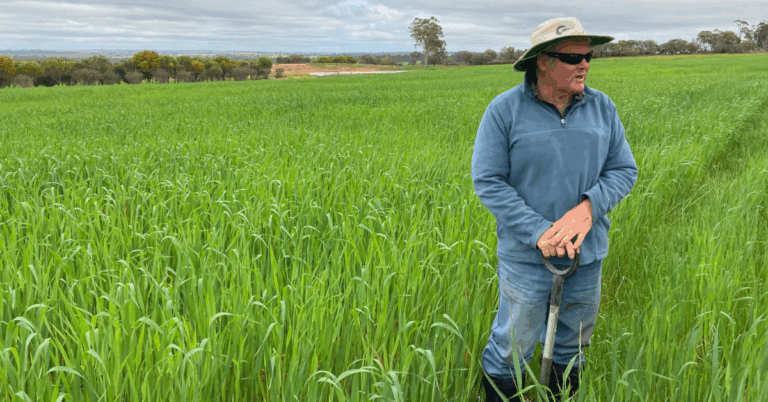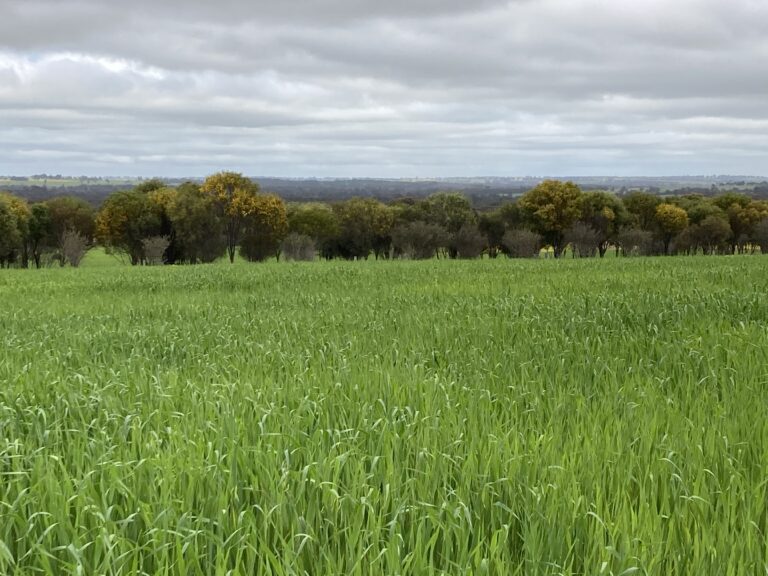
For those who are exploring the feasibility of entering the carbon market, we’re sharing David McFall’s experience of integrating nature-based values into his farm a few years ago.
In his own words
My brother Michael and I were lucky, we had parents and grandparents that let us have a bit of a go with our ideas back in the late 70s and 80s.
We wanted a lot more nature-based influence across the farm because that’s how we farm in an organically certified system.
It’s important to us to have subtle values fully expressed, such as habitat and symbiotic relationships to aid production.
The property is about 1,000 ha with about 250 ha under remnant management. A third of the farm is cropped and we also manage livestock under agistment arrangements.
This country can get wet so there’s a lot of salinity around. We’ve integrated a lot of water management (contour banks) and trees to deal with salinity. We’ve planted about 250 ha with trees, some for habitat, others for commercial reasons such as oil mallees.
Stock graze through most of these so it’s a win-win.
We also entered the Carbon Farming market, mainly using mallees but also biodiversity species. Our strategy was to look at underlying issues, areas that were low in production or needed soil stabilisation, planting them with trees and getting a constant stream of income.
These are long-term arrangements and they’re not to go into lightly. We were a bit naïve in terms of indexing. The land value has actually gone up. But we do place other values on trees.
We’ve got 20 million ha cleared in WA, 2 million hectares now gone to salt, which could increase to 6 million hectares if we don’t do anything.
But if we plant 10-15% to trees we can probably address that and bring in other values such as increasing moisture retention.
It can work in a farming system, integrating other enterprises on areas of low production across the landscape. It’s all just a matter of where you place your values.

To me, the mallee is the perfect solution because we can get an income from it and it creates opportunities for regional communities, so it’s not such a big loss. We can also make fuel out of these trees to address our fuel issues.
Unfortunately, the oil mallee industry has not achieved its targets. It’s well perched for carbon and liquid fuels, but the original program of trying to get 10% of the vegetation back across the landscape, we’re hardly 0.001% because people have lost confidence in it due to a lack of commercial outcome and public policy support.
But, now as more things align such as carbon, fuel insecurity, rural revival and the need to restore the landscape for long-term productivity, there is increasing opportunity.
It just comes down to getting the right support in the right place with the right mindset so we can create a new reinvigorated future for regional Australia.
Where to get your trees
If you’re looking to incorporate trees and shrubs this spring here are a couple local nurseries to check out:
Blackwood Environment Society
Selling plants endemic to the Bridgetown Greenhouses area.
They are currently taking orders for the 2025-25 season, please email nursery@blackwoodenvironmentsociety.org.au for a plant order form.
Geographe Landcare Nursey https://gcln.org.au/
Katanning Landcare
Planting equipment for hire including a Chatfield Tree Planter to help get lots of trees in the ground this season.
This article is shared as part of South West NRM’s Sustainable Agriculture Facilitator role which is supported by the Australian Government through funding from the Natural Heritage Trust under the Climate-Smart Agriculture Program.
